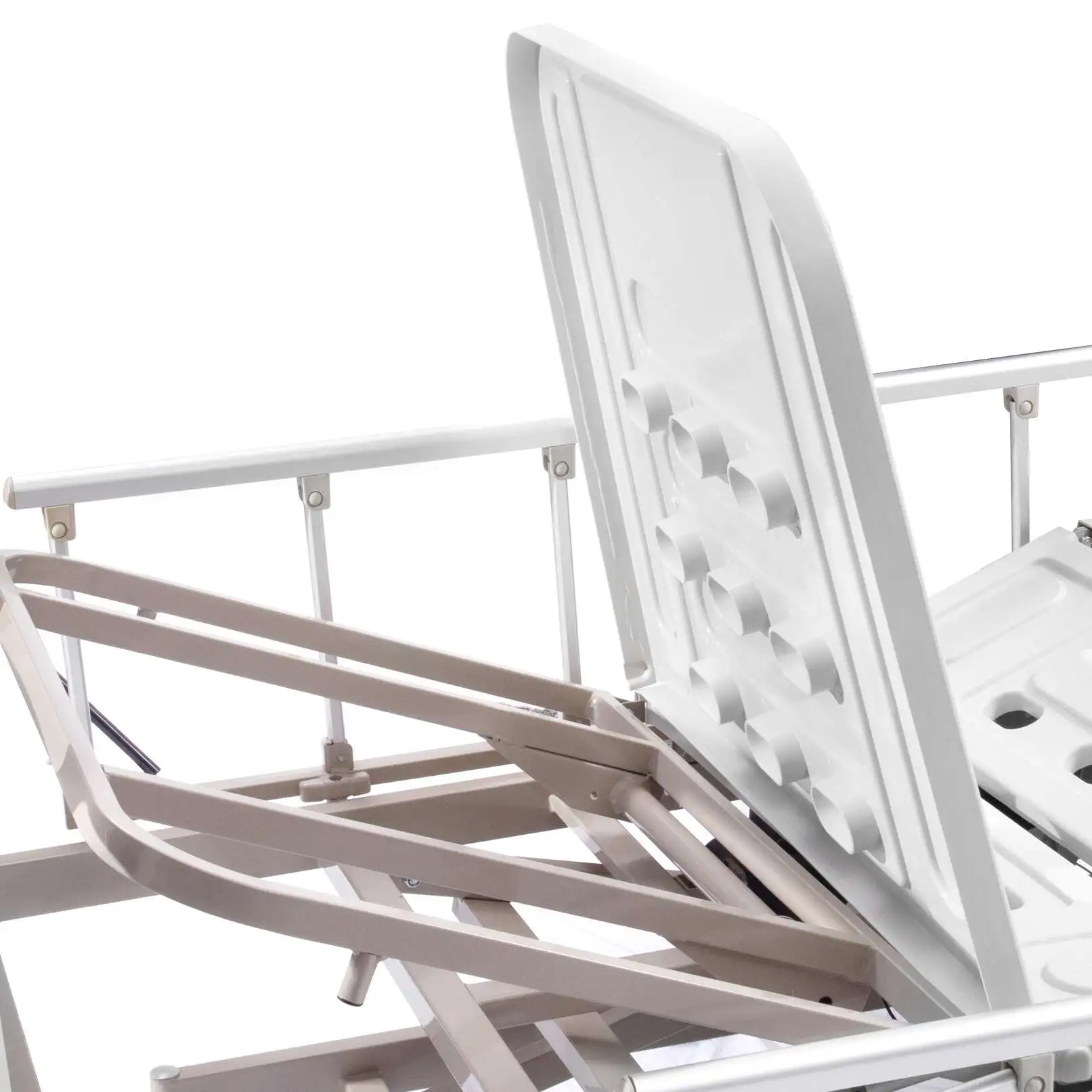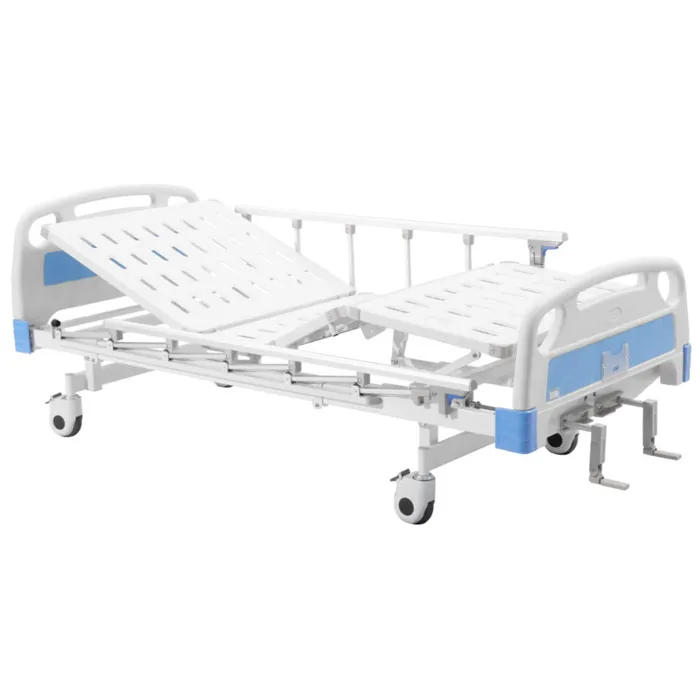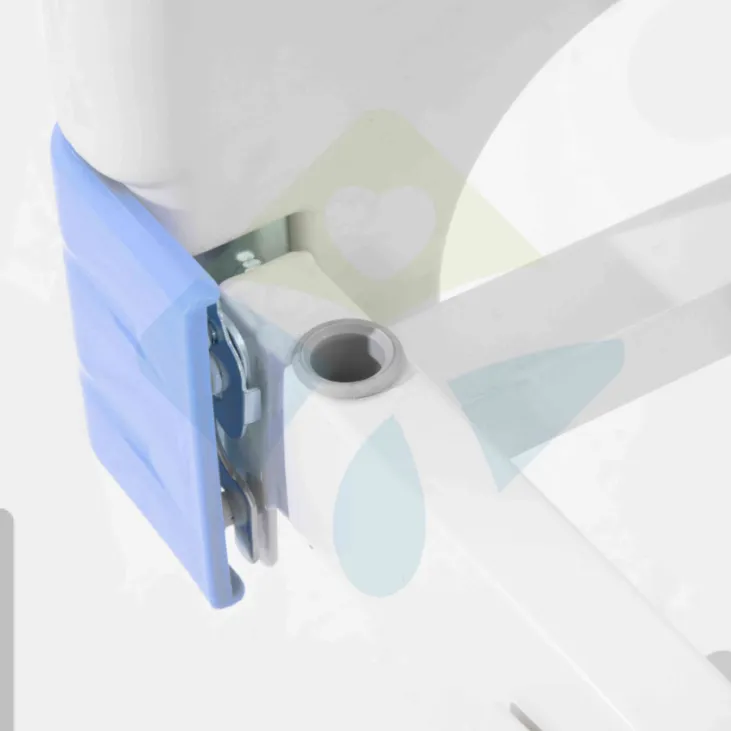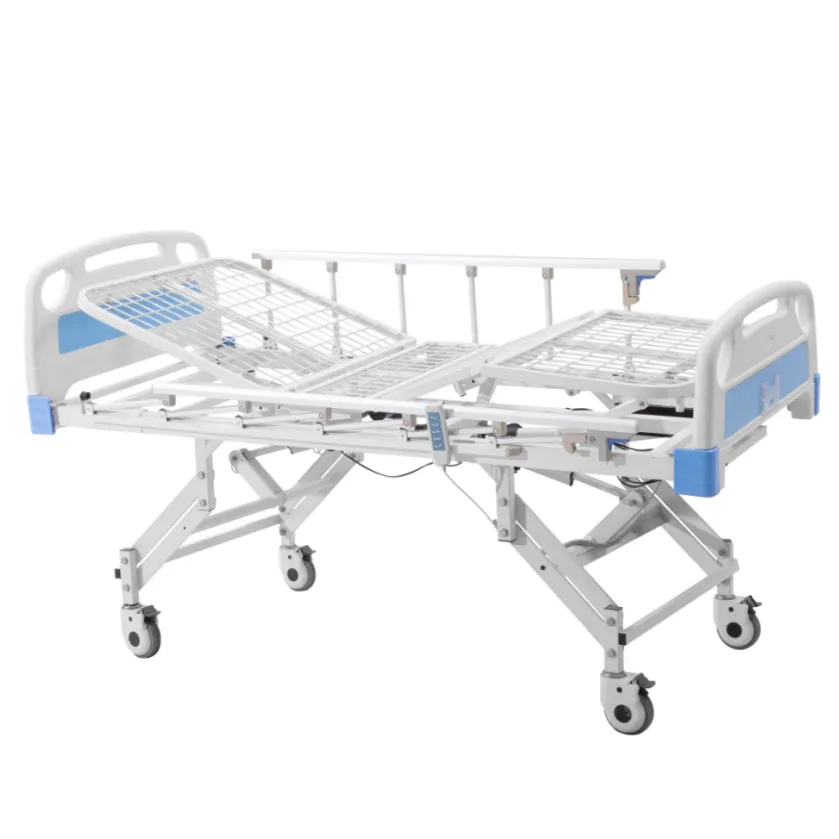As a core facility in medical environments such as hospitals, nursing homes, and home care, the types and functions of hospital beds are constantly evolving. Among them, adjustable hospital beds and electric hospital beds are the two most common types. Although the two may seem similar on the surface, they actually have significant differences in design, function, and operation methods. These differences not only affect the user experience of the bed, but are also directly related to the patient's comfort, nursing efficiency, and medical costs.
This article will deeply analyze the core differences between adjustable hospital beds and electric hospital beds, and make detailed comparisons from multiple angles such as design principles, operation methods, applicable scenarios, and maintenance costs to help readers fully understand the characteristics and applicability of these two beds.

What is an adjustable hospital bed?
An adjustable hospital bed usually refers to a bed with manual or semi-automatic adjustment functions, which can adjust the height, tilt angle, and angle of other parts of the bed surface according to the needs of the patient. Common adjustment methods include manual rotation, pulling ropes, or adjustment through hydraulic systems. This type of bed is usually suitable for patients who are bedridden for a long time, especially those who need to adjust their posture according to treatment or care needs.
The design of adjustable hospital bed is relatively simple, usually consisting of bed frame, bed surface, adjustment device and support system. Its main feature is high flexibility, which can adjust different parts of the bed according to the needs of patients to provide better comfort and treatment effect.
What is electric hospital bed?
Electric hospital bed is a bed that is adjusted by an electric system, usually equipped with a motor and a controller, which can realize automatic adjustment of multiple parts such as bed height, back, legs, etc. The adjustment method of electric hospital bed is more convenient and precise. Patients or caregivers only need to use a remote control or a control panel beside the bed to adjust various postures. Electric hospital bed is widely used in hospitals, nursing homes, rehabilitation centers and home care environments, especially for patients who need to adjust their body position frequently.
Compared with adjustable hospital bed, electric hospital bed is more convenient in operation and can greatly improve nursing efficiency and patient comfort.

Adjustable bed VS. electric bed: What is the difference?
The main differences between adjustable and electric hospital bed:
1. Differences in operation methods
2. Adjustment accuracy and comfort
3. Electricity and operation energy efficiency
4. Cost differences
5. Applicable scenarios
6. Maintenance and repair
1. Differences in operation methods
The operation method of adjustable hospital bed usually requires manual adjustment by the user or caregiver. The most common adjustable hospital bed uses hydraulic system or mechanical device to adjust the bed surface, which is relatively cumbersome to operate, especially when the bed needs to be adjusted frequently, which puts a heavy workload on the caregiver. Some low-end models of adjustable hospital bed may also require direct manual adjustment. Although the cost is low, it lacks in convenience and accuracy of operation.
In contrast, electric hospital bed is adjusted by electric motor, and patients or caregivers only need to press the button on the remote control or operate the control panel next to the bed to complete the adjustment. Electric hospital bed can usually adjust multiple parts, such as back, legs, bed height, etc., and the operation process is simpler and faster. In addition, the adjustment of electric hospital bed is more precise, and can provide personalized posture adjustment that better meets the needs of patients, greatly improving the efficiency of care.
2. Adjustment accuracy and comfort
Since the electric hospital bed is equipped with an electric control system, the adjustment accuracy is relatively high. Through the remote control or control panel, the angle of the bed surface can be accurately adjusted, even in small increments. This allows patients to accurately adjust their lying position according to their personal comfort, treatment needs, and care requirements. In addition, electric hospital beds often have a memory function that can preset different angles and postures, allowing patients to quickly return to their previous comfortable positions.
The adjustment method of the adjustable hospital bed is usually relatively rough and the adjustment accuracy is low. Due to the limitations of manual adjustment or hydraulic systems, the adjustment range and accuracy of the bed are relatively limited. Although some high-end adjustable hospital beds use more advanced hydraulic technology, their adjustment convenience and accuracy are still lacking compared to electric hospital beds.
3. Power and operational energy efficiency
One of the biggest advantages of the electric hospital bed is that it does not require manual operation, which can reduce the physical labor of nursing staff. However, the electric hospital bed relies on power supply. If there is a power outage or the battery is exhausted, the bed may not work properly. Therefore, electric hospital beds usually need to check the battery or power system regularly to ensure its stability.
In contrast, adjustable hospital beds are usually not dependent on electricity and are adjusted entirely by manual or hydraulic systems, avoiding the inconvenience caused by power failures. Therefore, adjustable hospital beds can continue to be used in the case of unstable power supply or power outages. However, manual operation will increase the physical burden on caregivers, especially when the bed needs to be adjusted frequently, which can easily lead to fatigue.
4. Cost difference
The electric hospital bed is relatively expensive due to its complex electric system and sophisticated electronic control. In addition to the basic structures such as the bed frame and bed surface, the electric hospital bed also needs to be equipped with electronic components such as motors, control panels, and remote controls, which will increase the manufacturing cost and market price of the product. Especially in high-end electric hospital beds, advanced functions (such as memory function, massage function, etc.) will further push up the price.
In contrast, the price of adjustable hospital beds is relatively affordable. Due to its simple adjustment method, the mechanical components and hydraulic systems used are relatively basic, the production cost is low, and the market price is naturally relatively cheap. Therefore, in medical institutions or home care environments with limited budgets, adjustable hospital beds are still a popular choice.
5. Applicable scenarios
The electric hospital bed is more suitable for patients who need to stay in bed for a long time or have difficulty in moving, especially the elderly, seriously ill patients or patients in recovery. The electric hospital bed can easily adjust multiple postures, such as adjusting the back and legs, and even adjusting the height of the bed. Patients or caregivers can adjust the position of the bed according to actual needs to maximize comfort and reduce pressure sores and discomfort. In addition, the convenient operation of the electric hospital bed makes it widely used in medical institutions such as hospitals and rehabilitation centers.
The adjustable hospital bed is suitable for occasions with less adjustment requirements or limited budgets. Although its adjustment method is relatively simple, for some patients, manual adjustment is sufficient to meet daily care needs. In home care, nursing homes, emergency departments and other occasions, the adjustable hospital bed is still the first choice for many institutions or families due to its lower price and more basic design.
6. Maintenance and repair
The maintenance and repair of the electric hospital bed are usually complicated, and the functions of the battery, motor and control panel need to be checked regularly to ensure the stable operation of the electric system. If the electric system fails, the repair cost is high and professional maintenance is required.
The maintenance of adjustable hospital bed is relatively simple, mainly focusing on the maintenance of hydraulic system and mechanical parts. Due to its relatively simple structure, it is less difficult to repair, and most accessories are easy to replace, so its maintenance cost is low.

Adjustable VS. electric hospital bed: Pros and Cons comparison
1. Pros and Cons of adjustable hospital bed
Adjustable hospital bed Pros:
● Relatively low price: Compared with electric hospital bed, adjustable hospital bed has lower manufacturing and maintenance costs, so it is more affordable and suitable for families and medical institutions with limited budgets.
● Simple operation: Manual or mechanical adjustable beds do not rely on electricity, and have a simple structure, are not prone to electrical failures, and are relatively convenient to maintain and repair.
● Wide range of applications: For patients who need to occasionally adjust the bed angle or bed height, the manual adjustable hospital bed can meet the needs.
Adjustable hospital bed disadvantages:
● Requires a certain amount of physical strength: Manual operation requires a certain amount of physical strength, especially when adjusting the head or foot of the bed, which is more laborious and may not be suitable for patients with limited mobility.
● Inaccurate adjustment: The adjustment range and accuracy of the manually adjustable hospital bed are relatively low, and it cannot make various adjustments as finely as the electric hospital bed.
2. Pros and Cons of electric hospital bed
Pros of electric hospital bed:
● Convenient operation: The electric hospital bed is operated by a remote control or a control panel. Patients and caregivers hardly need to use force. It is easy to operate and is especially suitable for critically ill patients or patients who are bedridden for a long time.
● Accurate adjustment: The electric hospital bed can achieve multi-angle and multi-functional fine adjustment to help patients adjust to the most comfortable position and avoid discomfort and pressure sores caused by long-term bed rest.
● Reduce the workload of nursing staff: Nursing staff can easily adjust the bed surface through the remote control, reduce physical exertion, and improve nursing efficiency.
Cons of electric hospital bed:
● Higher price: Compared with the adjustable hospital bed, the manufacturing cost of the electric hospital bed is higher and the price is relatively expensive. It may not be suitable for families or institutions with limited budgets.
● Power dependence: The electric hospital bed requires an external power supply. Once the power is off or an electrical failure occurs, the adjustment function of the bed will be affected, and there are certain limitations in use.
● Complex maintenance: Since electric hospital beds contain more electric parts, once a failure occurs, the difficulty and cost of repair and maintenance are relatively large.

Can I get a customized hospital bed from your factory?
Yes! At Yikang Medical, we offer customized solutions to meet the specific requirements of our global clients. Whether you need hospital beds with adjustable heights, side rails, or electric functions, our R&D team is ready to support your customization requests. As a leading China manufacturer, we supply OEM and ODM medical furniture at factory prices. Let us know your specifications, and we’ll provide a competitive quote and fast delivery time for your bulk purchasing needs.

